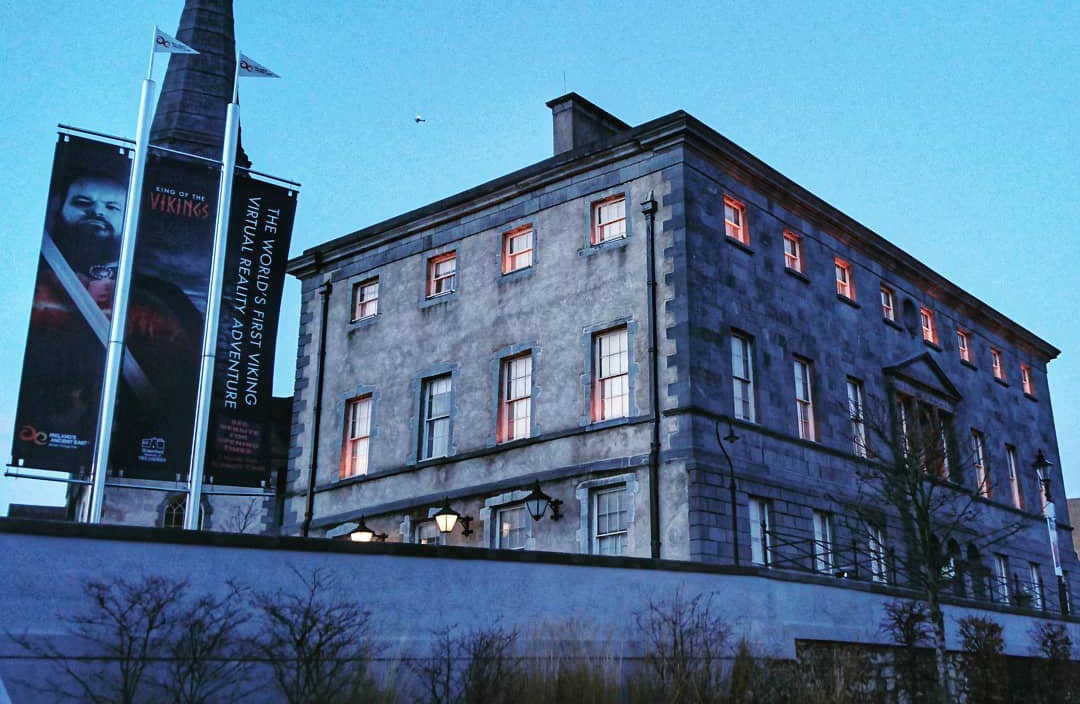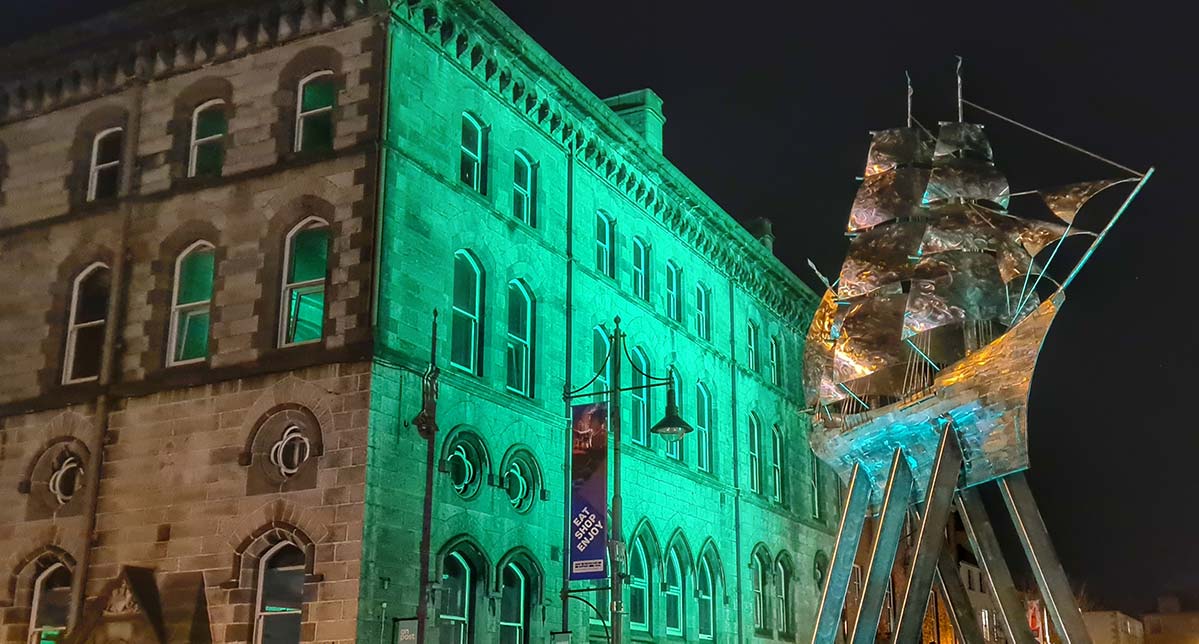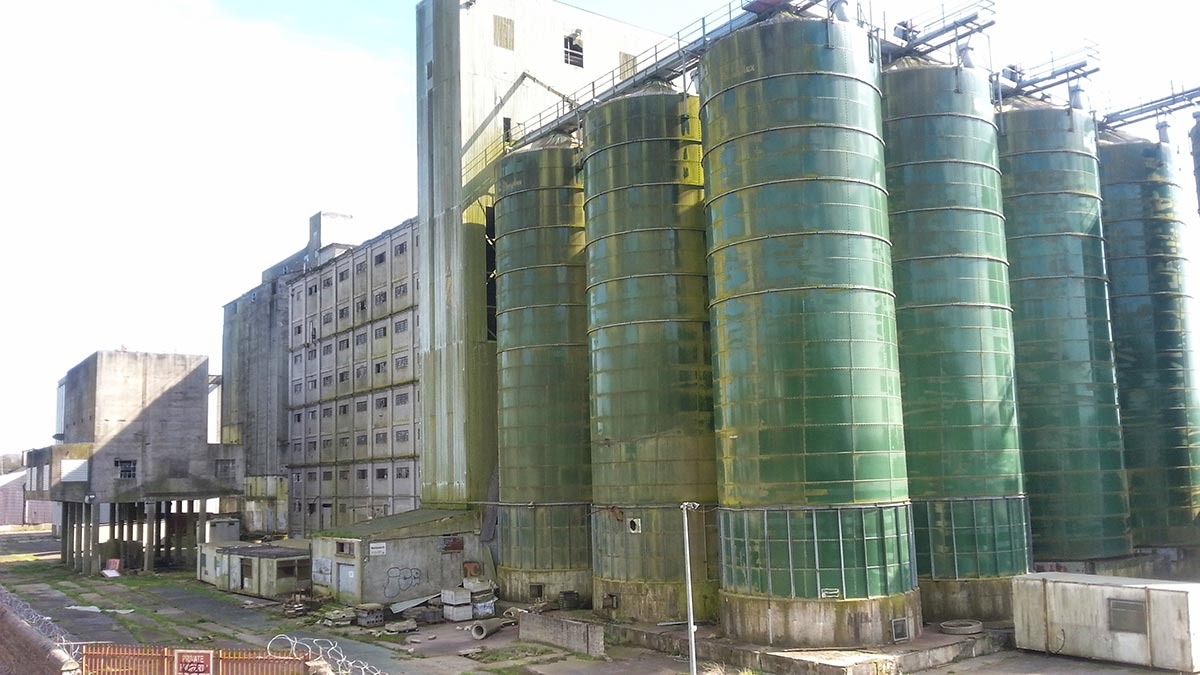The city of Waterford on the River Suir in the southeast of Ireland has always had a proud maritime history. From its founding by the Vikings, through medieval and industrial times and right up to today, the city and the sea are intrinsically linked. It is therefore interesting that the city’s North Quays have been abandoned for a number of years.

Waterford was founded in 914 by the Vikings who called it Veðrafjǫrðr, roughly translating as Ram Fjord. They saw the harbour as an important staging point to launch raids inland from the rivers Barrow, Nore and Suir, and along the coasts of Ireland. Over time, the Vikings developed a thriving trading network, which included the export of wool, hides, and other goods, as well as the import of luxury goods from across Europe.
The Viking influence can still be seen in the city today, with many landmarks and buildings reflecting this heritage. One of the most notable landmarks is Reginald’s Tower, which was built by the Vikings in the 10th century as a watchtower and a defensive structure. Today, it houses the city’s Viking Museum, which tells the story of the Viking settlement in Waterford and displays artefacts from the period.

The Normans took Waterford in 1170 during the Norman invasion of Ireland, led by Richard de Clare, 2nd Earl of Pembroke, who was also known as Strongbow. The Norman invasion was initiated at the request of the King of Leinster, Dermot MacMurrough, who had been deposed by the High King of Ireland and sought Norman military support to regain his throne.
In August 1170, a Norman force led by Strongbow arrived in Ireland and began their campaign. Waterford was one of the key targets of the invasion, as it was a strategic port city that could be used to bring in reinforcements and supplies.
The Norman force initially besieged the city, but after a few days, they were able to breach the city’s defences and take control. According to historical accounts, the Normans entered the city through a breach in the walls and were met with fierce resistance from the Irish defenders. However, the Normans were able to overcome the resistance and capture the city. Strongbow married Aoife, daughter of Dermot MacMurrough, in Waterford.

King Henry II of England visited Waterford in 1171, shortly after the Norman invasion of Ireland. His visit to Waterford was part of a wider campaign to assert his authority over the newly conquered territory and establish English rule in Ireland.
Henry’s visit to Waterford was significant in several ways. First, it marked the first time that an English king had visited Ireland, and it signalled the beginning of English involvement in Irish affairs. Second, it was a demonstration of Henry’s authority and power, as he was able to command the respect and loyalty of both the Norman lords and the Irish leaders.
During his visit to Waterford, Henry granted a number of charters to the city, which gave it a degree of autonomy and allowed it to develop its own trade and commerce. The charters also granted the citizens of Waterford certain rights and protections, such as the right to hold their own courts and the right to a fair trial. This made Waterford the first city on the island of Ireland.

During the medieval period, Waterford was a major centre for trade and commerce, thanks to its location on the River Suir, which provided easy access to the sea and to the rest of Ireland. The city’s merchants traded in a wide range of goods, including wool, hides, fish, and grain, and they also imported luxury goods from across Europe, such as wine, spices, and textiles.
Waterford’s prosperity during the medieval period is reflected in the city’s architecture and landmarks. Many of the city’s most iconic buildings date from this period, including the Medieval Museum, which is housed in a 13th-century Choristers’ Hall, and the Bishop’s Palace, which was built in the 18th century on the site of a medieval palace.

Being a medieval port city, Waterford suffered greatly during the Black Death. The first recorded outbreak of the plague in Waterford was in 1349, and it is estimated that as much as a third of the city’s population may have died as a result of the disease. The plague was spread by fleas that lived on rats, which were common in the unsanitary conditions of the medieval city.
The impact of the Black Death on Waterford was profound. The city’s economy was severely disrupted, as many of its merchants and craftsmen died or fled the city. The social and political structures of the city were also affected, as the loss of so many people created a power vacuum and led to increased social unrest.
The city and the port recovered and in 1494 Waterford earned the motto Urbs Intacta Manet – the untaken city, having repulsed an attempted landing by the pretender to the English throne, Perkin Warbeck. Unfortunately, the city did not remain untaken when Oliver Cromwell laid siege to it in 1649. He landed in Ireland with a force of 10,000 soldiers, with the aim of suppressing the Irish Rebellion and establishing English control over the country. His forces laid siege to Waterford, which was one of the last remaining strongholds of the Irish forces. The city’s walls were breached and the English forces eventually took control of the city. Many indentured labourers were exiled during Cromwell’s reign as Lord Protector, leaving aboard ships in Waterford bound for islands in the West Indies.
The 17th century also saw the arrival of the Huguenots. They were French Protestants who fled France in the late 17th due to religious persecution, with many of them settling in Waterford. They were skilled craftsmen and merchants, and they played an important role in the development of Waterford’s trade and commerce. They established a number of businesses in the city, including textile mills, breweries, and distilleries, and they were also involved in the production of glass and other luxury goods. During this period, the city walls that had been built to protect the town were removed in part to facilitate the expansion of the port and the city quays.

The 18th century saw the beginning of what would become Waterford’s greatest export. Waterford Crystal was founded in Waterford in 1783 by two brothers, George and William Penrose. The Penrose brothers were members of a prominent family that had been involved in the glassmaking industry for several generations. They established the Waterford Glass House in the city, with the aim of producing high-quality glassware and crystal.
The Waterford Glass House quickly gained a reputation for producing some of the finest glassware in the world. The company’s products were characterised by their high level of craftsmanship, as well as their elegant designs and intricate details. Waterford Crystal became particularly famous for its crystal stemware, which was favoured by royalty and other prominent figures throughout Europe. Today, Waterford Crystal is still made in the city and the House of Waterford Crystal is a popular tourist attraction.

In 1816, The Waterford Harbour Commissioners were founded. They were tasked with managing and developing the port, with the coming of steam power and larger ships during the industrial revolution. In the 19th century, shipbuilding was a major industry. The owners of the Neptune Ironworks, the Malcomson family, built and operated the largest fleet of iron steamers in the world between the mid-1850s and the late 1860s, including five trans-Atlantic passenger liners. The Waterford Steamship Company took many Irish emigrants to America after the famine.

One of the most important companies in the city in the 19th century was R&H Hall ,also known as Richardson & Hedditch Hall. R&H Hall was founded in Cork in 1839 by two English merchants, William Richardson and Joseph Hedditch. The company owned and operated a number of mills and warehouses on Waterford’s North Quays and it also had a fleet of ships that transported goods to and from Waterford’s port.

The R&H Hall mill on the city’s North Quays was completely transformed in 1905 with the construction of a large grain store, later called the Hennebique Building. It was built by William Friel and designed by French engineer Francois Hennebique, using steel-reinforced concrete. The system was quite revolutionary at the time and the building was cutting edge for its time. Inside the new mill, state-of-the-art machinery and technology were used to produce high-quality flour for domestic and international markets. The mill had the capacity to produce up to 1,200 barrels of flour per day, and it employed a large workforce of skilled millers and other workers.
Other companies operated on the North Quays site. Waterford Flour Mills, famous for the production of Everest Self-Raising Flour, was owned by the Malcomson family of the Waterford Steamship Company. It was acquired by R&H Hall in the early part of the 20th century. Another was Flake Maize Limited which still operates in the city today.

As the size of the vessels used for the import and export of grain grew, so did the needs of R&H Hall and new facilites opened in Belfast, Dublin, Ringaskiddy and Foynes. The reliance on bigger deep sea ports favoured these locations and Waterford was eventually phased out and the facility closed. The mill was sold to Odlums and continued operating until a restructuring of the Irish flour milling industry in the 1980s. During this time, there was a move towards larger, more centralised milling operations in Ireland, and many of the smaller mills, including the Odlums mill in Waterford, were closed or consolidated.

On 23 June 1993, the Port of Waterford moved 4 km (2.5 miles) downstream to Belview Port, removing cargo shipping from the city’s quays. The South Quays saw the establishment of a number of carparks along its length and the North Quays have been abandoned ever since. An investment group which included McNamara Construction, a Cork company that was quite active in Ireland’s Celtic Tiger boom years, bought the site but their plans fell through.
The Irish government designated the North Quays site a Strategic Development Zone, the first outside Dublin, in an effort to attract development. The Saudi Arabian Fawaz Al Hokair Group revealed plans to build retail, office and residential properties on the site but the project stalled during the Covid pandemic.

The mills remained abandoned for nearly 30 years before demolition officially began to make way for the Al Hokair development. The first silo was demolished on 10 May 2016. The final building to be demolished was the one designed by Francois Hennebique. It had famously featured a gigantic poster covering it however it was torn off by wind in the storms of early 2014. The site has remained empty since the demolition. It has been used as the launch site for fireworks during the Spraoi and Winterval festivals.

In November 2022, Harcourt Developments was revealed as the new developer of the North Quays site with a €170m investment from the government for infrastructure related projects including a multi-modal transport hub. It is possible, after a long time laying empty, that life will return to Waterford’s North Quays again soon.


Pingback: The Abandoned Old Red Iron Bridge in Waterford, Ireland